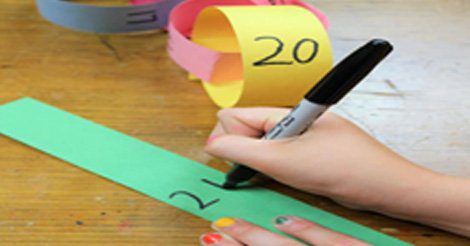Paper Chain Calendar
This will be a fun activity that your child will wake up every day wanting to do right after they brush their teeth! To create a visual structure of one-to-one correspondence, explain to your child that they will be creating a paper chain with a link for each day in the month. Beginning on the first day of the month, use the daily calendar to count the days of the month, pointing to each day as your child and you count together. You can then ask your child, “How many links do we need for the month?” You can then cut those strips out together and place them into an envelope and set aside. Next, explain to your child since today is the first day of the month, that this will be the first loop of the chain. (The first loop will be attached to the bottom of the calendar.) If you have multiple children, you can start multiple chains at the bottom of the calendar. Each morning you and your child will count the days and loops, and you will say, “Plus one more makes…” For example, on the 7th of the month you will count to 7 together on the calendar. You can then say, “We have had 7 days this month, let’s count our loops.” Count the loops at the bottom of the calendar. You will count to 6 together and you will say, “Plus one more makes…7.” Allow your child to number the loop and color or decorate before attaching.
Materials:
- Computer Paper
- Scissors
- Glue
- Markers
- Stickers
- Crayons
- Calendar
- Envelope
Age-appropriate Adaptations:
- Two-year-olds—Only count the days of one week on the calendar.
- Three-year-olds—This activity is tailored for a three-year-old. In addition, you can tell your child that the calendar is a tool to help us keep track of days, weeks, and months.
- Four-/Five-year-olds—Have your child count the days on the calendar; count the number of links; use different colored loops to represent each week of the month; Continue to add subsequent months. Emphasize to your child that the calendar is a tool to help us keep track of passing time during the year.
Skills Supported:
- Mathematics: Concepts of counting and one to one correspondence.
- Fine motor skills: With use of the markers and the scissors.

